blue screen of death
description: error screen displayed on a Microsoft Windows computer system following a fatal system error
33 results

Fancy Bear Goes Phishing: The Dark History of the Information Age, in Five Extraordinary Hacks
by
Scott J. Shapiro
Microsoft practiced “patch and pray”: sell new products, fix problems, sell newer products, fix newer problems, sell even newer products, fix even newer problems, and so on. Microsoft externalized costs onto consumers, who had their files destroyed, credit card information stolen, or faced the Blue Screen of Death, the blank blue screen that signaled a crash and the demise of unsaved files. Matters soon got even worse for Microsoft customers. In 2001, the eponymous Anna Kournikova vorm tricked users into clicking on a file attachment that seemed to be a picture of the fetching tennis star, but instead contained a malicious macro that sent copies of itself to everyone on the user’s address list.
…
Device drivers are so essential that they are given access to the Windows “kernel”—the part of the operating system that handles the most sensitive operations. Windows, therefore, had to trust device drivers written by many manufacturers as much as it trusted the code it had written itself. If the code was buggy, which it often was, the driver might crash the kernel, too (known as a kernel panic). Microsoft, however, would get blamed for the Blue Screen of Death. To address the problem of shoddy third-party drivers, Microsoft turned to the same trick that the Tortoise pulled on Achilles in chapter 2. Recall how the Tortoise duped Achilles into turning his code into data, thus breaking his logic program. Whereas the Tortoise was trying to hack code, the team at Microsoft was trying to fix it.
…
Developers that used the kit could also run the SDV to check for bugs. If they found bugs, the device developers repaired them before distributing the driver to Windows users. SDV was the beginning of Microsoft’s extensive program-verification system. These downcode solutions have greatly strengthened Windows and demolished the Blue Screen of Death. But the major revolution of Trustworthy Computing was in the upcode. Microsoft went beyond nominal commitment to cybersecurity—it changed its corporate culture. By retraining the Windows team, Microsoft prompted designers, developers, and testers to think of security at all stages of software development.

Smart Cities: Big Data, Civic Hackers, and the Quest for a New Utopia
by
Anthony M. Townsend
Published 29 Sep 2013
Even if there is peace and equality, the smart city may come crashing down under its own weight because it is already buggy, brittle, and bugged, and will only become more so. Smart cities are almost guaranteed to be chock full of bugs, from smart toilets and faucets that won’t operate to public screens sporting Microsoft’s ominous Blue Screen of Death. But even when their code is clean, the innards of smart cities will be so complex that so-called normal accidents will be inevitable. The only questions will be when smart cities fail, and how much damage they cause when they crash. Layered atop the fragile power grid, already prone to overload during crises and open to sabotage, the communications networks that patch the smart city together are as brittle an infrastructure as we’ve ever had.
…
Strolling west from Kenmore Square, a few minutes later I came across the new home of the Broad Institute, a monolith of glass and steel that houses a billion-dollar center for research in genomic medicine. The street wall was tricked out with an enormous array of displays showing in real time the endless sequences of DNA base pairs being mapped by the machinery upstairs. And then, out of the corner of my eye, I saw it. The Blue Screen of Death, as the alert displayed by Microsoft Windows following an operating-system crash is colloquially known. Forlorn, I looked through the glass at the lone panel. Instead of the stream of genetic discoveries, a meaningless string of hexadecimals stared back, indicating precisely where, deep in the core of some CPU, a lone miscomputation had occurred.
…
This public reaction to disasters of our own making, he argues, has spurred the development of “a new cultural undercurrent of ‘technological citizenship’ characterized by greater knowledge of, and skepticism toward, the complex systems that permeate modern societies.”14 If the first generation of smart cities does truly prove fatally flawed, from their ashes may grow the seeds of more resilient, democratic designs. In a smart city filled with bugs, will our new heroes be the adventurous few who can dive into the ductwork and flush them out? Leaving the Broad Institute’s Blue Screen of Death behind, I headed back in the rain to my hotel, reminded of Brazil, the 1985 film by Monty Python troupe member Terry Gilliam, which foretold an autocratic smart city gone haywire. Arriving at my room, I opened my laptop and started up a Netflix stream of the film. As the scene opens, the protagonist, Sam Lowry, squats sweating by an open refrigerator.

Driverless: Intelligent Cars and the Road Ahead
by
Hod Lipson
and
Melba Kurman
Published 22 Sep 2016
There is also the threat of data security, resulting from malevolent hackers installing rogue hardware onto a driverless car or tinkering with the operating system. The stakes are higher, too. When a personal computer suffers a catastrophic system failure, the result is frustration. No user ever died from the dreaded Microsoft Windows “blue screen of death.” In a driverless car, however, the equivalent of the blue screen of death could be, literally, death. Other less disastrous but still dangerous failure scenarios would be if a specific piece of hardware stopped responding, or if the entire operating system got bogged down in some sort of systemic problem and began to run very, very slowly.

Heart of the Machine: Our Future in a World of Artificial Emotional Intelligence
by
Richard Yonck
Published 7 Mar 2017
Then, with merciless premeditation, Hinch fired eight bullets into the heart of his 2012 Dell XPS 410 computer. The computer did not survive. Unaware he had done anything illegal, Hinch told police the computer had been giving him trouble for months. (It’s illegal to wrongfully discharge a firearm inside the Colorado Springs city limits.) When the infamous BSOD—the Windows “Blue Screen of Death”—began repeatedly popping up on his monitor, Hinch said he finally snapped. “It was glorious,” Hinch said of the calculated machinicide, adding that he had absolutely no regrets whatsoever. ———— Since the early days of the personal computer, stories of users smashing their equipment with Louisville sluggers or throwing them from fifth-floor windows have become increasingly prevalent.
…
See autonomous weapons systems (AWS) Axilum Robotics, 217 B backpropagation, 41 Backyard Brains, 127 Bandai, 198–199 Baron-Cohen, Simon, 59–60, 112 Barrett, Lisa Feldman, 18–19 Bayesian networks, 41 Beowulf, 95–96 Berliner-Mauer, Eija-Riitta, 187 Berman, David, 70 The Better Angels of Our Nature (Pinker), 267 Beyond Verbal, 71–73, 76–77, 265 Bhagat, Alisha, 173 “The Bicentennial Man (Asimov),” 207 BigDog, 101 biomechatronics, 52–53 black box bound, 251 Bletchley Park, 36 Block, Ned, 242–246, 249, 257 Bloom, Benjamin, 115–116 “Bloom’s two sigma problem,” 115–116 Blue Frog Robotics, 86 “Blue Screen of Death,” 50 Boltzmann machines, 67 Boole, George, 37 Borg, 267 Boston Robotics, 101 brain chips, 125–127 brain-computer interfaces (BCIs), 111, 211–214 BrainGate, 213 Brave New World, 229 BRCA breast cancer genes, 75 Breathed, Berkeley, 95 Breazeal, Cynthia, 84–86, 118–119 brittleness (in software), 42, 44–45, 131 Broca’s area of the brain, 16, 23 Brooks, Rodney, 84 Brown, Eric, 197 Buddy, 86 “Bukimi no tani” (“The Uncanny Valley”), 96–98 Bullwinkle, 187 Butler, Samuel, 228 C Calvin, Susan, 231 “Campaign to Stop Killer Robots,” 130 Capek, Karel, 229 Carpenter, Julie, 78–82, 89 CCTVs, 144 Chalmers, David, 244 chatbots, 140–141, 185, 196 Cheetah, 101 Cheney, Dick, 167 childcare and resistance to technology, 159–160 chimpanzees, 14, 16, 243 Chomsky, Noam, 13 A Christmas Carol (Dickens/Zemeckis), 95–96 Clarke, Arthur C., 232 Clippy (Clippit), 51–52 Clynes, Manfred, 44, 72, 265 Cobain, Kurt, 223 Colossus, 210 combinatorial language, 13–14 communication, nonverbal, 10, 15, 25, 111, 269 companion robots, 151–152 Computer Expression Recognition Toolbox (CERT), 114–115 computer machinicide, 49–50 “conceptual act model,” 18 consciousness and AI, 247 definition of consciousness, 242–247 development of intelligence, 257–259 human emulation, necessity of, 252–255 possibility of, 240–242 ranges of intelligence, 255–257 self-awareness, 245–249 theories concerning consciousness and self-awareness, 250 content-based retrieval systems, 42–44 Conversational Character Robots, 87 “core affect,” 18 cortisol, 16, 221 Curiosity Lab, Tel Aviv, 118 cyber warfare, 133 cybercrime, 133–134 CyberEmotions consortium, 19 Cybermen, 267 cybernetic persons AI and social experiments, 195–198 digital pets, 198–200 emotional engagement with, 200–203 as family members, 194–195 future attitudes toward, 203–208 Cytowick, Richard, 45 D Dallas Autism Treatment Center University of Texas Arlington, 113 Damasio, Antonio, 34–35, 249 “dames de voyage,” 182–183 Daniel Felix Ritchie School of Engineering and Computer Science, 112 “Dark Web,” 158 Darling, Kate, 90–91 DARPA.

Ajax: The Definitive Guide
by
Anthony T. Holdener
Published 25 Jan 2008
Of course, any filename and line number would also be helpful. Most important, it should tell the user whom to contact with this error information, and if possible, it should automate that notification task. 418 | Chapter 12: Errors: To Be (in Style) or Not to Be Figure 12-2. The Windows XP “blue screen of death” Figure 12-3. The Windows NT 3.1 “blue screen of death” Errors that occur on the client side are easier to handle than errors that occur on the server side, simply because the client should automatically have everything it needs to report the error. Server errors must be communicated down to the client in some Handling an Error with Care | 419 fashion, and then parsed before they can be sent to the same mechanism that the client-side errors use.
…
Notifying the User Any errors that are relayed to the user should be clear and should provide information for contacting the development team for reporting purposes. Errors such as those in Figure 12-1 are not necessarily helpful, as they do not convey much information to the user that could help solve the problem. Figure 12-1. A typical “blue screen of death” in Windows Figure 12-2 shows an error that is more helpful, in that it provides a bit more information, but it can also be a little overwhelming. Then there are errors such as that shown in Figure 12-3; not only does this error tell the end user absolutely nothing useful, but it is also the type of error report that overwhelms the typical end user (or, for that matter, even the typical power users of this operating system).
…
A developer who takes the time to integrate errors into an application gives the user the feeling that the application is made by professionals. That is the whole point of this chapter: to give the user a sense of comfort and reliability. Users do not have this when an application fails and the error screen that comes up is over their heads, or is simply useless to them (the Windows blue screen of death again). A user would at least like to know what happened, and wants to feel 420 | Chapter 12: Errors: To Be (in Style) or Not to Be that the error will be taken care of by capable individuals. Errors that incorporate the look of the application as a whole go a long way toward achieving this.

Whole Earth Discipline: An Ecopragmatist Manifesto
by
Stewart Brand
Published 15 Mar 2009
My wrong prediction was based on a neat little story I told myself. My own PC was pathetically vulnerable to bugs in the software, which could lead to a cascade of problems ending in the blue screen of death. Surely, I presumed, the huge old mainframes of the world and their ancient software would be even more vulnerable to a bug as deeply embedded as I thought Y2K must be. The world was facing the blue screen of death! I should have listened to Danny Hillis, who has designed whole computer platforms. He predicted that Y2K would lead, at worst, to some dog licenses not being renewed on time. I should have listened at a dinner in 1998 with senior Amazon.com engineers.

Dreaming in Code: Two Dozen Programmers, Three Years, 4,732 Bugs, and One Quest for Transcendent Software
by
Scott Rosenberg
Published 2 Jan 2006
Simonyi’s Intentional Software, at heart, simply proposes one more layer between the machine and us. Software’s layers are its essence, and they are what drive progress in the field, but they have a persistent weakness. They leak. For instance, users of many versions of Microsoft Windows are wearily familiar with the phenomenon of the Blue Screen of Death. You are working away inside some software application like a Web browser or Microsoft Word, and suddenly, out of nowhere, your screen turns blue and you see some white text on it that reads something like this: A fatal exception 0E has occurred at 0167:BFF9DFFF. The current application will be terminated.
…
The comfortable, familiar interface of the application they were using has vanished; a deeper layer of abstraction—in this case, the Windows “shell” or lower-level control program—has erupted like a slanted layer of bedrock poking up through more recent geological strata and into the sunlight. (Perplexing as the Blue Screen of Death is, it actually represented a great advance from earlier versions of Windows since it sometimes allows the user to shut down the offending program and continue working. Before the blue screen, the crash of one Windows program almost always took down the entire machine and all its programs.)

Drive: The Surprising Truth About What Motivates Us
by
Daniel H. Pink
Published 1 Jan 2008
Ventures like TOMS blur, perhaps even shatter, the existing categories. Their goals, and the way companies reach them, are so incompatible to Motivation 2.0 that if TOMS had to rely on this twentieth-century operating system, the whole endeavor would seize up and crash in the entrepreneurial equivalent of a blue screen of death. Motivation 3.0, by contrast, is expressly built for purpose maximization. In fact, the rise of purpose maximizers is one reason we need the new operating system in the first place. As I explained in Chapter 1, operations like TOMS are on the vanguard of a broader rethinking of how people organize what they do.

Gray Hat Python: Python Programming for Hackers and Reverse Engineers
by
Justin Seitz
Published 15 Feb 2009
We write the values to disk because a successful fuzzing run when working with drivers means that we will most definitely crash the system; we want a history of our last fuzzing test cases before the crash so we can reproduce our tests. Warning Make sure you aren't fuzzing on a production machine! A successful fuzzing run on a driver will result in the fabled Blue Screen of Death, which means the machine will crash and reboot. You've been warned. It's best to perform this operation on a Windows virtual machine. Let's get right to the code! Open a new Python file, name it ioctl_fuzzer.py, and hammer out the following code. ioctl_fuzzer.py ioctl_fuzzer.py import struct import random from immlib import * class ioctl_hook( LogBpHook ): def __init__( self ): self.imm = Debugger() self.logfile = "C:\ioctl_log.txt" LogBpHook.

The Future of the Internet: And How to Stop It
by
Jonathan Zittrain
Published 27 May 2009
That might be the only remedy owed the consumer, rather than, for example, emotional damages from missing one’s favorite shows. This arises from the difference between damages in contract and tort. See generally W. PAGE KEETON, PROSSER AND KEETON ON THE LAW OF TORTS 962 (1984). 18. See Wikipedia, Blue Screen of Death, http://en.wikipedia.org/wiki/Blue_screen_of_ death (as of June 1, 2007, 09:30 GMT). 19. See supra Ch. 5, at 119. 20. See Jonathan Zittrain, A History of Online Gatekeeping, 19 HARV. J.L. & TECH. 253 (2006). 21. See David P. Reed et al., Active Networking and End-to-End Arguments, IEEE NETWORK, May/June 1998, at 69—71, available at http//web.mit.edu/Saltzer/www/publications/endtoend/ANe2ecomment.html. 22.
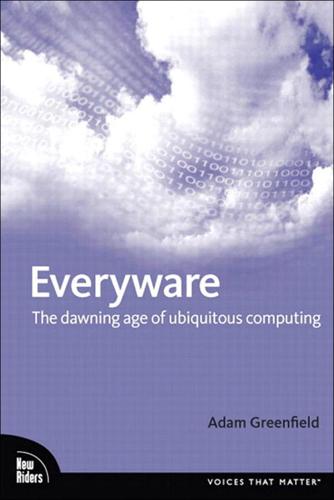
Everyware: The Dawning Age of Ubiquitous Computing
by
Adam Greenfield
Published 14 Sep 2006
We will have to account for what happens when such mediation breaks down—as it surely will from time to time, given its origins in the same institutions, and the same development methodologies, that brought us unreliable mobile phone connections, mandatory annual operating system upgrades, and the Blue Screen of Death. We will have to accept that privacy as we have understood it may become a thing of the past: that we will be presented the option of trading away access to the most intimate details of our lives in return for increased convenience, and that many of us will accept. And we will have to reckon with the emergent aspects of our encounter with everyware, with all the ways in which its impact turns out to be something unforeseeably more than the sum of its parts.

Future Crimes: Everything Is Connected, Everyone Is Vulnerable and What We Can Do About It
by
Marc Goodman
Published 24 Feb 2015
Computer failures also played a role in the 2010 Deepwater Horizon disaster that killed eleven workers and created the largest environmental catastrophe in American history, leaking 4.9 million barrels of oil into the Gulf of Mexico. At a government hearing into the disaster, Michael Williams, the chief electronics technician aboard the Deepwater Horizon, testified that crucial drill monitoring and control systems were crippled by frequent software crashes and a “blue screen of death” on the oil rig’s computer prior to the explosion that sank the rig. Though the 2003 Northeast blackout and the Deepwater Horizon disaster were by all accounts accidents, they provide useful insights into the tremendous harm that can stem from computer system malfunctions. Whether a computer system fails because of accidental or criminal action, however, is only a question of intent.
…
A computer-controlled Oerlikon MK5 twin-barreled anti-aircraft gun suffered an apparent software glitch, causing the device to fire in full-auto mode, at the rate of 550 rounds per minute while spinning around wildly in 360-degree circles like an out-of-control garden hose. When it was all over, nine soldiers, including several female officers, were dead, and another fourteen were gravely injured, leaving behind a blood-splattered scene reminiscent of a Terminator movie. The incident goes to show that when a robot suffers a computer “blue screen of death,” it can actually lead to death and have far-reaching impact in our common 3-D physical space. It’s not just industrial- or ground-based bots that can fail, so too can flying ones. According to a Washington Post report, over four hundred military UAVs have accidentally fallen from the sky, domestically and overseas, “slamming into homes, farms, runways, highways and in one case an Air Force C-130 Hercules cargo plane while mid-flight.”

Scary Smart: The Future of Artificial Intelligence and How You Can Save Our World
by
Mo Gawdat
Published 29 Sep 2021
I hope so, but can’t promise you that. Such unforeseen events, by the way, do not necessarily need to be external. Sometimes computer crashes result from situations the computers themselves generate. Perhaps the most infamous computer error in the history of humanity, so far, has been the Blue Screen of Death. This must have happened billions of times to users around the world, rarely without collateral damage such as losing a file you’ve been working on. BSODs happen as a result of some kind of mismatch between the different parts of the computer – perhaps a program prevented from accessing part of the memory because it was kept protected by the operating system for a different task, or memory or processor speed being over-clocked, pushed to run faster than its typical speed – resulting in a mismatch or a crucial part of the hard drive not operating as expected, and thus depriving the computer of a vital piece of code.

The Thinking Machine: Jensen Huang, Nvidia, and the World's Most Coveted Microchip
by
Stephen Witt
Published 8 Apr 2025
“As a result, you couldn’t really determine how to sort the objects in the scene.” This led to the serious “clipping” errors, where game characters would sink into sidewalks or teleport through walls. In the worst cases, the NV1 ceased communicating with the Windows operating system entirely, producing the notorious Blue Screen of Death. “It was catastrophic,” Little said. With few supported titles, NV1 sales tapered off, and dissatisfied customers took advantage of the generous return policies of the big-box retailers to take the cards back to stores. A few months after the launch, Diercks went shopping at Fry’s Electronics, where he saw dozens of garish Diamond Edge boxes on the shelves, opened and marked down in price.

Places of the Heart: The Psychogeography of Everyday Life
by
Colin Ellard
Published 14 May 2015
What the students ended up doing was climbing the stairs in one of the models and leaping out of the upstairs window to see what would happen. In this case, as my models weren’t scripted for such offbeat actions, what the students managed to do was to crash my model so that they came face to face with the famous “blue screen of death” known the world over as a generally discouraging sign for a computer program. With some hindsight, I should have expected no less from these creative and adventurous students, immersed as they were in all kinds of methods for high-performance visualization of 3D environments. But the deeper question, as we see increasing penetration of synthetic environments in our lives, is whether we will come to see the normal constraints and barriers afforded by physical space to be less important.
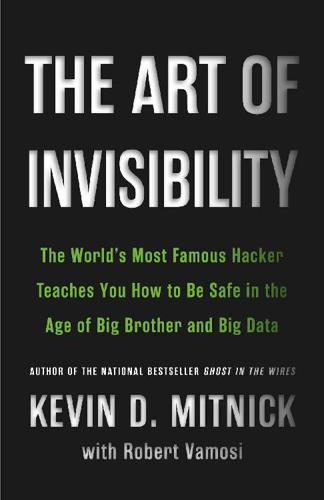
The Art of Invisibility: The World's Most Famous Hacker Teaches You How to Be Safe in the Age of Big Brother and Big Data
by
Kevin Mitnick
,
Mikko Hypponen
and
Robert Vamosi
Published 14 Feb 2017
We have, and it would be best if these industries started following existing best practices instead of insisting that what they are doing is radically different from what’s been done before. It’s not. Unfortunately, failure to secure code in a car has much greater consequences than a mere software crash, with its blue screen of death. In a car, that failure could harm or kill a human being. At the time of this writing, at least one person has died while a Tesla was in beta autopilot mode—whether the result of faulty brakes or an error in judgment by the car’s software remains to be resolved.29 Reading this, you may not want to leave your home.

Joel on Software
by
Joel Spolsky
Published 1 Aug 2004
Developers can feel more secure that a change they made isn't going to break any of the 1024 versions of the system that get produced, without actually having an OS/2 box on their desk to test on. Developers who check in their changes right before the scheduled daily build know that they aren't going to hose everybody else by checking in something which "breaks the build"—that is, something that causes nobody to be able to compile. This is the equivalent of the Blue Screen of Death for an entire programming team, and happens a lot when a programmer forgets to add a new file they created to the repository. The build runs fine on their machines, but when anyone else checks out, they get linker errors and are stopped cold from doing any work. Outside groups like marketing, beta customer sites, and so forth who need to use the immature product can pick a build that is known to be fairly stable and keep using it for a while.

Reset
by
Ronald J. Deibert
Published 14 Aug 2020
(The term “reboot” is often used interchangeably.) A reset is a way to terminate a runaway process that is causing problems and start over anew. Users of Apple products will be familiar with the “spinning beach ball” that signifies a process that is stuck in a loop, while Microsoft customers will no doubt recall the “blue screen of death.” We’ve all been there at one time or another. The term “reset” is also used more broadly to refer to a fresh start. As when parents tell their children to take a “time out,” a reset is usually suggested when something we are doing has become counterproductive and deserves some reconsideration.

A Sea in Flames: The Deepwater Horizon Oil Blowout
by
Carl Safina
Published 18 Apr 2011
More 3-D, a lot more graphics. Drillers sit in a small room and use computer screens to watch key indicators. Depth of the bit, pressure on the pipe, flows in, flows out. But on this job, the software repeatedly hit glitches. Computers froze. Data didn’t update. Sometimes workers got what they called the “blue screen of death.” In March and April 2010, audits by maritime risk managers Lloyd’s Register Group identified more than two dozen components and systems on the rig in “bad” or “poor” condition, and found some workers dismayed about safety practices and fearing reprisals if they reported mistakes. Risk is part of life.
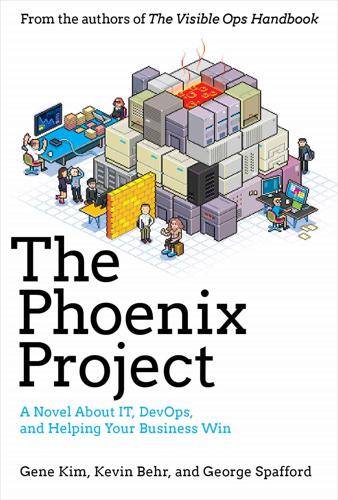
The Phoenix Project: A Novel About IT, DevOps, and Helping Your Business Win
by
Gene Kim
,
Kevin Behr
and
George Spafford
Published 14 Jul 2013
When nothing shows on the screen, I grab my empty mug that I keep on my desk by the picture of Paige and my two sons and walk to the coffee machine in the corner. When I get back to my desk, a window on the screen tells me that it’s going to install some critical new updates. I sit down, click “OK” and watch the status bar crawl across the screen. Suddenly, I see the dreaded “blue screen of death.” My laptop is now completely locked up and unusable. It happens again even after I reboot. I mutter in frustration, “You’ve got to be kidding me!” Just then, Ellen, my new assistant, pokes her head around the corner. Holding out her hand she says, “Good morning. Congratulations on the promotion, Bill!”

The Nature of Software Development: Keep It Simple, Make It Valuable, Build It Piece by Piece
by
Ron Jeffries
Published 14 Aug 2015
If the application keeps the keys or passwords in memory, then memory dumps will also contain them. For UNIX systems, core files are just memory dumps of the application. An attacker that can provoke a core dump can get the passwords. It’s best to disable core dumps on production applications. For Windows systems, the “blue screen of death” indicates a kernel error, with an accompanying memory dump. This dump file can be analyzed with Microsoft kernel debugging tools; and depending on the configuration of the server, it can contain a copy of the entire physical memory of the machine—passwords and all. Security as an Ongoing Process Frameworks can’t protect you from the Top 10.

Warnings
by
Richard A. Clarke
Published 10 Apr 2017
That time-consuming process was the only way to reconnect the electricity from the main grid to the substations and then to the houses, apartment blocks, and commercial establishments that were now in the dark. Shortly after ten that evening, the utility company had the power back to normal, but most of their computer screens were still showing the “blue screen of death.” They had been killed by something called BlackEnergy. BlackEnergy is not so much a single piece of software as it is a family of malware. When it was first detected in 2014, it seemed to be a program that generated a flood of requests on the Internet, a digital denial of service, overwhelming a targeted server with traffic to prevent most genuine messages from getting through.
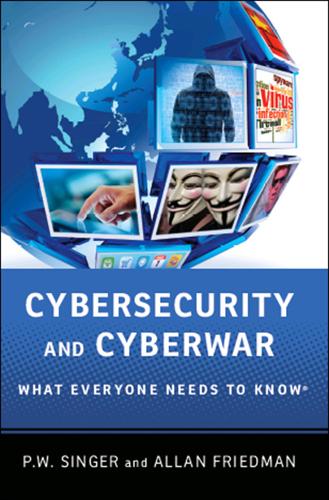
Cybersecurity: What Everyone Needs to Know
by
P. W. Singer
and
Allan Friedman
Published 3 Jan 2014
How can we know whether a system is functioning normally if we depend on that system to tell us about its current function? Availability means being able to use the system as anticipated. Here again, it’s not merely the system going down that makes availability a security concern; software errors and “blue screens of death” happen to our computers all the time. It becomes a security issue when and if someone tries to exploit the lack of availability in some way. An attacker could do this either by depriving users of a system that they depend on (such as how the loss of GPS would hamper military units in a conflict) or by merely threatening the loss of a system, known as a “ransomware” attack.

Androids: The Team That Built the Android Operating System
by
Chet Haase
Published 12 Aug 2021
So the team kept optimizing things… and to some extent, still does. 195 Joe: “I had The Postal Service / Give Up CD playing on repeat for that coding binge. I still have weird delirious memories when I hear that album.” 196 A kernel panic is essentially a complete OS crash. A Linux kernel panic is the equivalent of the Blue Screen of Death on Windows. 197 An explanation of multi-threaded programming is… way beyond the scope of this book. Suffice it to say that a multi-threaded architecture is much more complicated than a single-threaded one because the UI code is not as much in control of when it is being called from various parts of the application, potentially in parallel on different threads. 198 Emacs is a classic text editor favored by a certain segment of programmers.
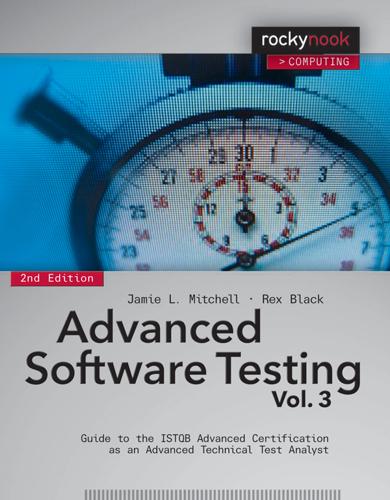
Advanced Software Testing—Vol. 3, 2nd Edition
by
Jamie L. Mitchell
and
Rex Black
Published 15 Feb 2015
If a tree falls in the woods and no one hears it, does it make a sound? We don’t know if a failure that we don’t perceive right away makes a sound, but it almost always leaves damage behind. The damage may be corrupted data, which could be described as a land mine waiting for a later user to step on, a general slowdown of the system, or an upcoming blue screen of death; there are a lot of eventual symptoms possible. So what causes these failures? Here are some possibilities. It may be a minor memory leak where a developer forgets to deallocate a small piece of memory in a function that is run hundreds of times a minute. Each leak is small, but the sum total is a crash when the system runs out of RAM a few hours down the road.

Daemon
by
Daniel Suarez
Published 1 Dec 2006
NSA Tech: It’s fingering us, Doctor. I didn’t spoof our IP address. Philips: It’s okay, Chris, I didn’t ask you to. The hooded figure snapped alert suddenly, then raised a finger and pointed at her. Guardian: You don’t belong here! Lightning arced from that finger in her general direction, and the Blue Screen of Death filled their view. Then everything went black. NSA Tech: We are down! Down, down, down! Chapter 29:// Memory Pete Sebeck stared at a dimple in the concrete of his cell wall. It was the only imperfection in an unrelenting sameness. It was his secret—a place upon which to center his mind as the world turned unseen around him.
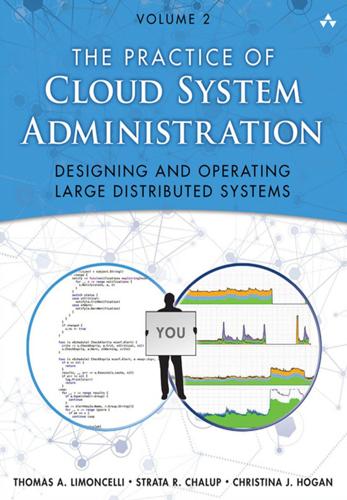
The Practice of Cloud System Administration: DevOps and SRE Practices for Web Services, Volume 2
by
Thomas A. Limoncelli
,
Strata R. Chalup
and
Christina J. Hogan
Published 27 Aug 2014
For example, the software author may decide that handling a particular situation is unlikely to happen and will be difficult to recover from; therefore the program declares an exception and exits in this situation. Certain data corruption scenarios are better handled by a human than by the software itself. If you’ve ever seen an operating system “panic” or present a “blue screen of death,” that is an exception. When designing software for operability, it is common to use a software framework that detects exceptions, gathers the error message and other information, and submits it to a centralized database. Such a framework is referred to as an exception collector. Exception collection systems offer three benefits.

This Is How They Tell Me the World Ends: The Cyberweapons Arms Race
by
Nicole Perlroth
Published 9 Feb 2021
At the NSA, finding the underlying flaws that EternalBlue exploited was only half the battle. The real feat, former TAO hackers told me, was finding a way to use the bugs without crashing a target’s computer. Shortly after TAO first uncovered, or purchased, the flaws that made up the tool EternalBlue, they took to calling it EternalBluescreen—a reference to the eerie blue screen of death that pops up anytime a computer crashes. For a time TAO operators were under strict orders to use EternalBlue only for precision attacks. They had to get special permission from on high to fire the exploit, for fear of jeopardizing a mission. It took a team of some of the NSA’s best analysts to develop the algorithm that ensured that EternalBlue would land on the target’s computer without crashing screens on the other end.
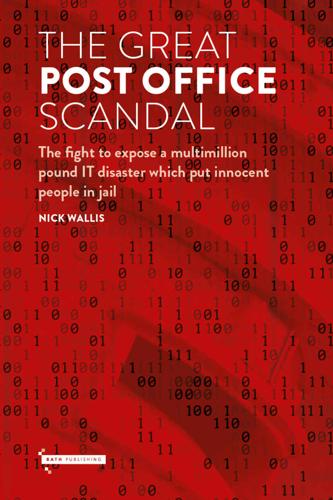
The Great Post Office Scandal: The Fight to Expose a Multimillion Pound Scandal Which Put Innocent People in Jail
by
Nick Wallis
Published 18 Nov 2021
After 17 years working for Post Office HQ in London, Shann was bored. Newly divorced, she moved 300 miles west with her nine-year-old daughter, to start over as a Subpostmaster. Shann’s ‘bubbly’ personality made her a natural pillar of the community and she was welcomed into the village. Life was good until Horizon started playing up. Despite regular ‘blue screen of death’ crashes, she was told she was the only one having problems with the system, and she was held responsible for inexplicable Horizon discrepancies. Although she was never suspended, repayment threats meant she had to cash in a savings account she had set up to help her daughter at university.
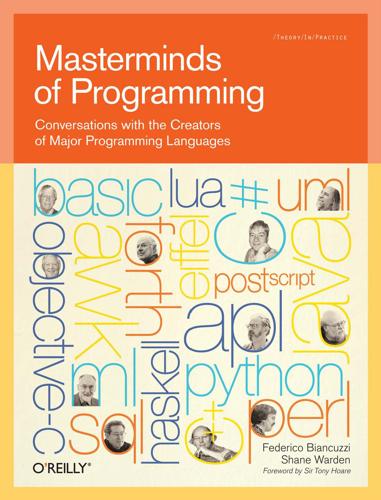
Masterminds of Programming: Conversations With the Creators of Major Programming Languages
by
Federico Biancuzzi
and
Shane Warden
Published 21 Mar 2009
The whole pervasive network makes you think about things a little bit differently because it has a lot of spinoff things. One of the components of that was computing in your grandmother’s living room. Or a handheld device that doesn’t look like a computer. James: On the long list of things that that changes, you don’t ever want to see a blue screen of death. You don’t want to have complex installation features. So Java ended up with really strong fault-isolation mechanisms. Most people don’t think of them that way, but they’re there; things like the way that memory pointers work and garbage collections work and exceptions work are really about fault isolation.

Designing Data-Intensive Applications: The Big Ideas Behind Reliable, Scalable, and Maintainable Systems
by
Martin Kleppmann
Published 17 Apr 2017
There is no fundamental reason why software on a single computer should be flaky: when the hardware is working correctly, the same operation always produces the same result (it is deterministic). If there is a hardware problem (e.g., memory corrup‐ tion or a loose connector), the consequence is usually a total system failure (e.g., ker‐ nel panic, “blue screen of death,” failure to start up). An individual computer with good software is usually either fully functional or entirely broken, but not something in between. This is a deliberate choice in the design of computers: if an internal fault occurs, we prefer a computer to crash completely rather than returning a wrong result, because wrong results are difficult and confusing to deal with.
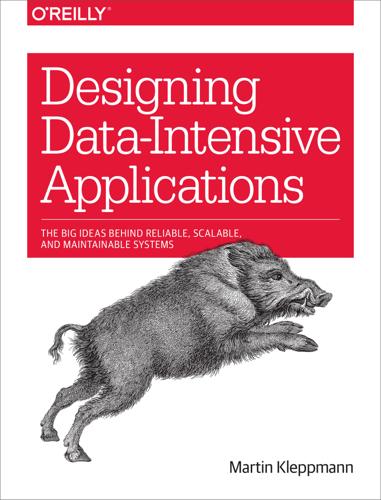
Designing Data-Intensive Applications: The Big Ideas Behind Reliable, Scalable, and Maintainable Systems
by
Martin Kleppmann
Published 16 Mar 2017
There is no fundamental reason why software on a single computer should be flaky: when the hardware is working correctly, the same operation always produces the same result (it is deterministic). If there is a hardware problem (e.g., memory corruption or a loose connector), the consequence is usually a total system failure (e.g., kernel panic, “blue screen of death,” failure to start up). An individual computer with good software is usually either fully functional or entirely broken, but not something in between. This is a deliberate choice in the design of computers: if an internal fault occurs, we prefer a computer to crash completely rather than returning a wrong result, because wrong results are difficult and confusing to deal with.

Engineering Security
by
Peter Gutmann
Conflicting security systems can cause anything from hard-to-diagnose intermittent networking problems (some of my networking code, when it encounters certain should-never-occur connectivity problems, then goes on to check for the presence of various personal firewall products which are invariably the cause of the strange behaviour), complete loss of network connectivity, crash-and-reboot cycles, or the dreaded blue screen of death [275]. Vendors are often well aware of these issues and have their own products check for incompatible security products from other vendors on install, although most then allow the install anyway, thereby exposing the user to the incompatibilities. Even without these conflicts between different security tools, sometimes just a single tool can cause trouble without any external assistance.